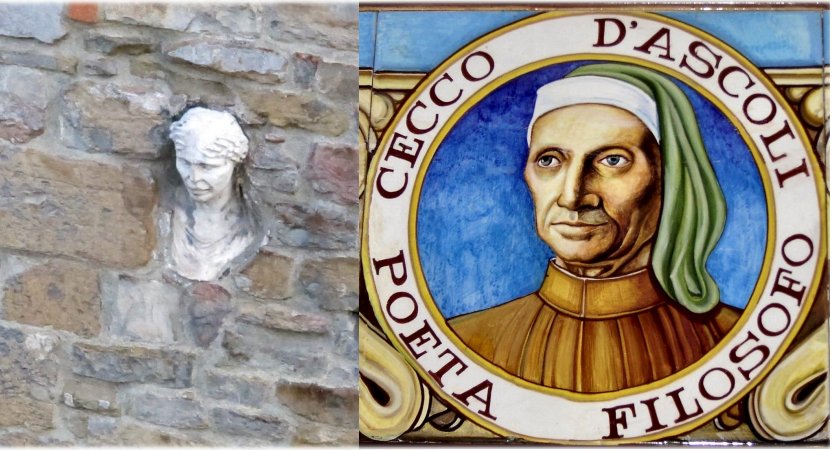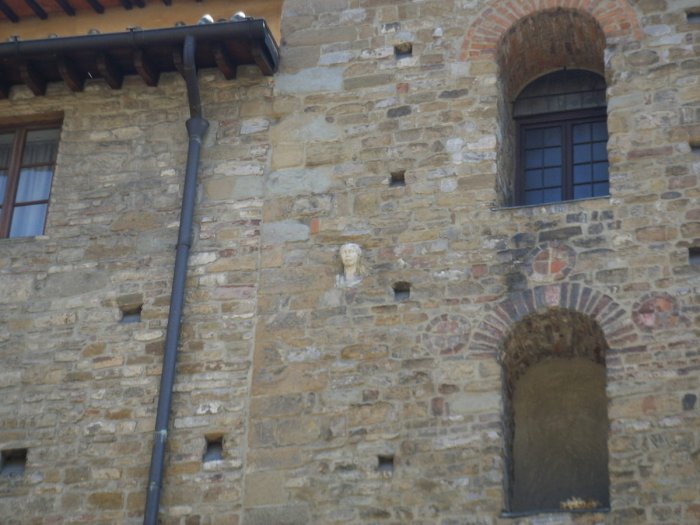Mysterious La Berta – ‘Petrified’ Stone Head And The Curse Of Cecco d’Ascoli Who Was Burned At The Stake
Ellen Lloyd - AncientPages.com - If you pass the old Church of Santa Maria Maggiore in Florence, Italy you may not even notice La Berta, but she is there, looking down at you. The mysterious stone head of an unknown woman has been part of the Church for as long as anyone can remember, but it’s still unknown who she once was.
Local legends tell the “petrified head” embedded in the bricks can be traced to a nasty event that took place on September 16, 1327.
The Curse Of Cecco d’Ascoli
On this particular day, Cecco d’Ascoli (1257 – 1327) was going to be burned at the stake for heresy. The man who was an accomplished scientist was passing the crowds of people who had gathered on the streets to witness the event. Many were standing on balconies eager to see the execution.
Left: Head of La Berta - Credit: Sailko, CC BY 2.5 - Right: Cecco d'Ascoli - Credit: annidiargento.it
When Cecco d’Ascoli was in front of the Church of Santa Maria Maggiore he asked for water, but at the very moment, a woman named Berta looked through the window and told the guards not to give the death-sentenced man any water. Not only did she deny him water, but she also accused him of being an alchemist who communicated with the Devil using water. She said that if Cecco d’Ascoli was given water, the Devil could grant him immunity. Of course, superstitious guards who heard this decided to follow the advice of the woman and made certain the prisoner never received a drop of water.
Cecco d’Ascoli was furious and cast a curse on her shouting 'You will never lift your head from there!'
Cecco d’Ascoli – An Accomplished Renaissance Scientist Who Was Too Outspoken
This is also exactly what happened according to local legends. The petrified head of La Berta is still visible from a small slit of the bell tower of the Church of Santa Maria Maggiore, waiting to be released from the curse.
Cecco d’Ascoli, who was burned at the stake was an accomplished scientist, but his free-thinking and plain-speaking attitude gave him many enemies. He was an encyclopaedist, physician, mathematician, astrologer, and poet.
In 1322 he was made Professor of astrology at the University of Bologna, and d’Ascoli could have dedicated his life to studies, but he became involved in religious debates. During the Renaissance, people questioned almost anything, art, learning, kings, queens, and the Church. That was the beauty of the Renaissance, but it was also dangerous to come in trouble with the Church. Even the powerful Medici family who were patrons of Galileo Galilei were not as strong as the leaders of the Inquisition and they failed to protect him when Galileo was arrested.
Cecco d’Ascoli had no one who protected him from the Inquisition, and he certainly made a deadly mistake when he attempted to determine the Nativity of Christ by reading his horoscope. This along with other accusations led to his death sentence.
The head of La Berta is easy to miss. Credit: Credit: Sailko, CC BY 2.5
Returning back to the mysterious head of an unknown woman in the upper part of the bell tower of the Church of Santa Maria Maggiore, it should be mentioned there are other stories that could shed light on her identity.
According to one theory, the head is a memorial dedicated to the greengrocer who donated bells to the church so they could chime whenever the city gates would open or close. Yet another theory is that the head is a Roman sculpture, but we don’t know whom it depicts.
It’s not unusual that old Churches and monasteries in Italy are associated with strange tales of magic, curses, and incredible supernatural events. For example, many think the Abbey of San Galgano is shrouded in mystery because no one knows how a meter-long sword ended in solid rock there.
Written by Ellen Lloyd – AncientPages.com
Copyright © AncientPages.com All rights reserved. This material may not be published, broadcast, rewritten or redistributed in whole or part without the express written permission of AncientPages.com
Expand for referencesThorndike, Lynn (1934). History of Magic and Experimental Science, vol. 2. New York: MacMillan. pp. 953–4, 959.
More From Ancient Pages
-
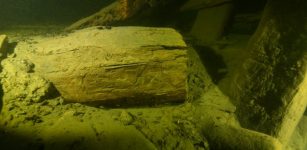 Barrels With Unique Intact Cargo Found On The Osmundvraket (Osmond Wreck)
Archaeology | Jun 7, 2024
Barrels With Unique Intact Cargo Found On The Osmundvraket (Osmond Wreck)
Archaeology | Jun 7, 2024 -
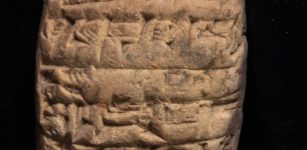 Lost City Of Irisagrig Comes To Life In Ancient Stolen Tablets
Archaeology | Jun 5, 2018
Lost City Of Irisagrig Comes To Life In Ancient Stolen Tablets
Archaeology | Jun 5, 2018 -
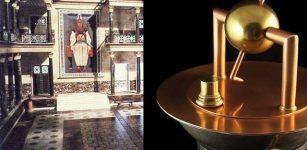 Incredible Ancient Machines Invented By Hero Of Alexandria – An Engineer Far Ahead Of His Time
Featured Stories | Jun 3, 2020
Incredible Ancient Machines Invented By Hero Of Alexandria – An Engineer Far Ahead Of His Time
Featured Stories | Jun 3, 2020 -
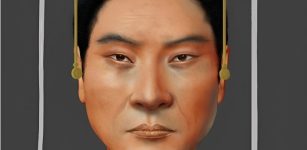 Facial Reconstruction Of Chinese Emperor Wu Who Lived 1,500 Years Ago
DNA | Mar 29, 2024
Facial Reconstruction Of Chinese Emperor Wu Who Lived 1,500 Years Ago
DNA | Mar 29, 2024 -
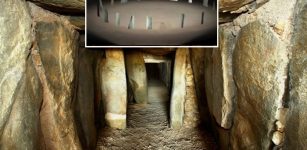 Dolmen de Soto: Unique Millennia-Old Underground Structure Remains A Puzzling Enigma
Featured Stories | Feb 10, 2022
Dolmen de Soto: Unique Millennia-Old Underground Structure Remains A Puzzling Enigma
Featured Stories | Feb 10, 2022 -
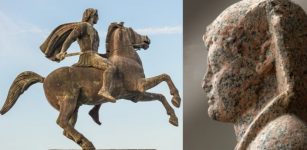 Alexander The Great Was Crowned Pharaoh And Declared Son Of God Amun
Ancient History Facts | Jan 4, 2019
Alexander The Great Was Crowned Pharaoh And Declared Son Of God Amun
Ancient History Facts | Jan 4, 2019 -
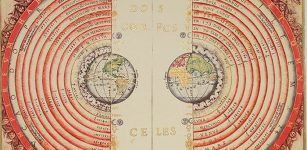 How Did Ancient Civilizations Make Sense Of The Cosmos And What Did They Get Right?
Civilizations | Mar 7, 2022
How Did Ancient Civilizations Make Sense Of The Cosmos And What Did They Get Right?
Civilizations | Mar 7, 2022 -
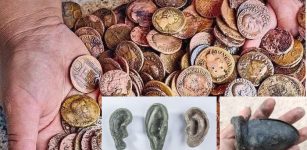 Extraordinary Etruscan And Roman Treasure Trove Unearthed In San Casciano dei Bagni, Italy
Archaeology | Aug 12, 2022
Extraordinary Etruscan And Roman Treasure Trove Unearthed In San Casciano dei Bagni, Italy
Archaeology | Aug 12, 2022 -
 Why Are There No Unicorn Fossils In A Museum?
Archaeology | Mar 17, 2023
Why Are There No Unicorn Fossils In A Museum?
Archaeology | Mar 17, 2023 -
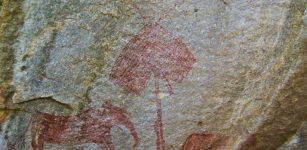 Hundreds Of Rock Paintings Found In Tanzania By Polish Archaeologist
Archaeology | Jul 11, 2018
Hundreds Of Rock Paintings Found In Tanzania By Polish Archaeologist
Archaeology | Jul 11, 2018 -
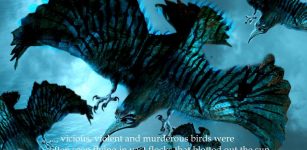 Mythical Stymphalian Birds: Terrible Winged Maidens With Birds’ Feet
Featured Stories | Feb 27, 2017
Mythical Stymphalian Birds: Terrible Winged Maidens With Birds’ Feet
Featured Stories | Feb 27, 2017 -
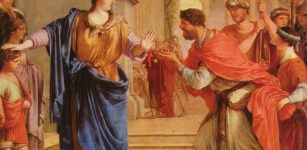 Ars Amatoria – Ancient Roman Flirting Tips – Could They Still Work?
Featured Stories | Mar 26, 2019
Ars Amatoria – Ancient Roman Flirting Tips – Could They Still Work?
Featured Stories | Mar 26, 2019 -
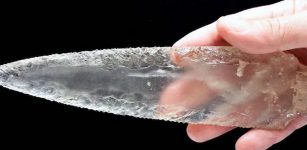 Remarkable 5,000-Year-Old Crystal Dagger Discovered In Megalithic Tomb Of Montelirio Tholos
Archaeology | Feb 13, 2021
Remarkable 5,000-Year-Old Crystal Dagger Discovered In Megalithic Tomb Of Montelirio Tholos
Archaeology | Feb 13, 2021 -
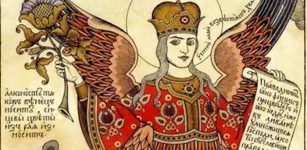 Alkonost – Mythical Bird Of Paradise In Slavic And Russian Folklore
Featured Stories | Jul 6, 2020
Alkonost – Mythical Bird Of Paradise In Slavic And Russian Folklore
Featured Stories | Jul 6, 2020 -
 3,300-Year-Old Bronze Figurine Of Canaanite God Unearthed At Lost Biblical City
Archaeology | Apr 12, 2020
3,300-Year-Old Bronze Figurine Of Canaanite God Unearthed At Lost Biblical City
Archaeology | Apr 12, 2020 -
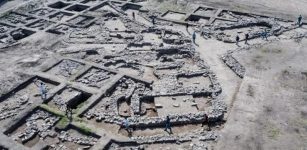 Incredible 5,000-Year-Old New-York-Like Metropolis Discovered In Israel
Archaeology | Oct 9, 2019
Incredible 5,000-Year-Old New-York-Like Metropolis Discovered In Israel
Archaeology | Oct 9, 2019 -
 Odin: Norse God Of War And Magic – Most Complex Figure Of The Norse Pantheon
Myths & Legends | Oct 27, 2016
Odin: Norse God Of War And Magic – Most Complex Figure Of The Norse Pantheon
Myths & Legends | Oct 27, 2016 -
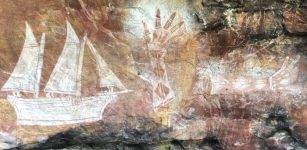 Map Of Hidden NT Landscape Where First Australians Lived More Than 60,000 Years Ago
Archaeology | May 5, 2023
Map Of Hidden NT Landscape Where First Australians Lived More Than 60,000 Years Ago
Archaeology | May 5, 2023 -
 Hollow Bones That Let Dinosaurs Become Giants Evolved At Least Three Times Independently
News | Apr 11, 2023
Hollow Bones That Let Dinosaurs Become Giants Evolved At Least Three Times Independently
News | Apr 11, 2023 -
 How Did Native American Indian Chiefs Get Their Names?
Ancient History Facts | May 27, 2016
How Did Native American Indian Chiefs Get Their Names?
Ancient History Facts | May 27, 2016

